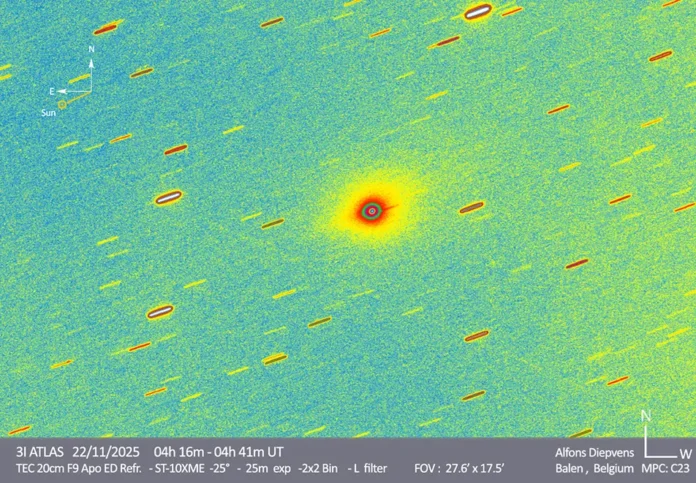
A 23-day countdown to December 19 will test every prevailing theory about what lies beyond our solar system.
- The speculation is about to end, and the observations are about to begin.
- This is the chance for the world to see what NASA cannot conceal.
- The Christmas gift the universe delivers may be something entirely unexpected.
By Samuel Lopez | USA Herald
The countdown has begun. Exactly 23 days from this moment, on December 19, 2025, the interstellar object designated 3I/ATLAS will make its closest approach to Earth, offering a fleeting, but unprecedented, observational window that is poised to fundamentally alter our understanding of what constitutes a visitor from deep space.
Unlike past events where the public was reliant on institutional releases, this particular close passage is a true global opportunity. Its proximity and expected brightness mean that powerful ground-based observatories and the trained eyes of amateur astronomers worldwide will have their telescopes locked onto 3I/ATLAS, providing an independent and continuous stream of data as the object swings by Earth and begins its long, lonely traverse toward the Jovian environment.
This independent visibility is critical, as the object has already defied simple categorization. Its discovery confirmed the presence of objects originating from beyond the solar system, but its subsequent non-gravitational acceleration, unexplained brightness surges, and lack of a well-defined cometary coma have fueled intense speculation among the scientific community.
The stakes are higher than a mere astronomical curiosity, largely driven by the controversial but compelling theories put forward by Harvard physicist Avi Loeb. Loeb’s hypothesis—that 3I/ATLAS may not be a natural comet or asteroid, but potentially a piece of artificial technology—moves beyond simple academic debate and frames the December 19 passage as a moment of potential revelation.
The object’s anomalous trajectory, specifically its deviation from purely gravitational physics, suggests the action of forces beyond simple solar heating and outgassing—forces that are not yet understood. As it approaches Earth, the world’s most sensitive instruments will be scrutinizing its every characteristic: its spectral signature for complex molecules, its thermal emissions for internal energy sources, and critically, any radio emissions, particularly in the hydroxyl line, which would be expected from a comet but whose absence or the detection of other narrow-band signals would be highly significant.
The opportunity to analyze 3I/ATLAS as it moves within close range, before it is inevitably warped and influenced by Jupiter’s massive gravitational field, is irreplaceable. What we witness as it nears the gas giant is anyone’s guess, but Loeb’s radical conjecture that the object might deploy probes into the Jovian environment to “seed” the system adds a layer of truly cosmic possibility to the flyby. This rare window is the scientific world’s Christmas present—a chance to settle whether 3I/ATLAS is merely the most peculiar comet ever observed, or a confirmation that we are not alone in the vast, deep well of the universe.
“This is the moment when the raw data will speak for itself. We will finally resolve whether the non-gravitational dynamics of 3I/ATLAS are an exotic natural phenomenon or something that requires a new frame of reference entirely.” — Statement from an astronomer affiliated with a high-priority tracking campaign
The next 23 days are critical, and the USA Herald will continue to provide real-time updates as the world’s telescopes focus on this unprecedented interstellar encounter.


